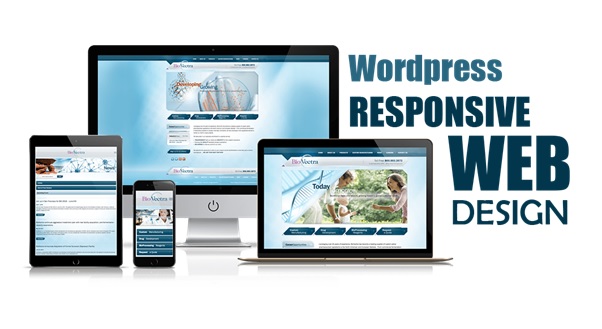WordPress is arguably one of the best and most popular platforms to build a website and operate it. It is user-friendly, sufficiently flexible, and accessible. It also provides a large number of themes and plug-ins that let you incorporate additional functionalities on your website.
This free and open-source website creation platform is ideal for both technical and non-technical users, as it provides easy blogging and website-building solutions. You can use it as a content management system (CMS) or a website creation platform, based on your requirements.
In the area of website creation, you will find a lot of information on WordPress development on the internet and from experts. There are also several agencies that provide custom WordPress development services for clients, depending on what kind of website they want.
Table of Contents
WordPress Web Design
WordPress has thousands of themes and plug-ins that help you design your website efficiently. This tool has been used to create more than 38 percent of all websites on the internet. Moreover, it has over 60 percent of the market share for content management systems on websites.
In short, WordPress now powers one-third of the entire internet, with its reliable service and flexible environment. These statistics are not surprising as WordPress web design has several benefits.
- It is free and provides easy hosting abilities.
- It has a wide selection of themes to make gantt chart for website design better.
- You can add and update content quickly and easily.
- Its plug-ins cover any and all functionality that you might need.
- It is easy to use and can be managed through any computer with an internet connection.
- It does not require any HTML editing or FTP software.
- It comes with search engine optimization.
- You can customize the web design entirely.
- It is scalable and can have multiple users.
Since WordPress is so popular in web design and development, it is but natural that you would find certain myths and mistakes related to its usage. Although you are free to design your website the way you need and want, there are a few red flags that can make the final product complicated and clumsy.
5 WordPress Web Design Myths and Mistakes to Avoid
Since your web design is the first thing a visitor sees, it is crucial to make a good impression. Errors and bad decisions in website designing can damage your final product and lead to a website that users find unhelpful and complicated.
Your design aspect also speaks of the website quality, and hence can affect the trust factor in your potential customers. It also builds a loyal visitor base and leads to good reviews and ratings.
The goal of an efficient web design should be to appear simple, provide all required features, and make the user experience smooth. If you can win the approval of your users, your business will only expand. Thus, you must take all precautions to avoid the web design mistakes that can hamper the turnout.
Here, we will discuss 5 common WordPress web design mistakes and myths that you might make as a beginner but need to avoid at all costs.
1. It is good to use too many plug-ins and visual elements.
We often get carried away with plug-ins when we start designing a website. This is because plug-ins offer a multitude of features and functionalities that may all seem important at first glance. However, you must know the downsides of using too many plug-ins.
They can really slow down your website, cause update issues, and lead to occasional errors. Once you get an idea of which plug-ins are contributing positively to your website and which can be avoided, it is better to remove the ones that are redundant.
Another aspect where people go overboard is visual elements. It is not necessary to put too much emphasis on your website’s visuals unless they contribute to your selling factor. Although looks matter in the web design, it is a mistake to focus solely on it and ignore the other factors, like content and support.

2. You won’t ever need a web designer or developer.
It is true that WordPress is extremely easy to use and can be understood by non-technical users. However, this does not mean you will never need a WordPress web designer or developer to set up your website.
Several things need developers, like setting up complex themes, adding some plug-ins, installing scripts, and customizing certain aspects. Even though you feel that you can do these things yourself, it is always a good idea to consult an expert. A small error or oversight can accidentally corrupt the code and crash your website.
3. You should use up all white spaces in the page.
Apart from web design, you must not forget that the content and page structure needs efficient designing too. You may feel that keeping white spaces on the web page is a wasted opportunity and thus you should fill up all extra spaces with content or visuals.
This is a big mistake, as white spaces are not wasted spaces. They actually contribute to the design by keeping it clean, legible, and simple. You can use these white spaces to pull more focus on important content or images. It also helps in placing call-to-action text and showcasing offers and latest attractions.
Hence, you should keep adequate white spaces on the page without worrying about their functionality.

4. Trends and site structure can be overlooked.
Trends keep getting updated every few days, and it may be very stressful for website designers to keep a track of what is trending at the moment. But that does not mean you should overlook trends.
One of the most popular trends nowadays is responsive design. If your website deals with technical aspects, it becomes all the more important to keep trends in mind while designing it.
Additionally, site structure is also often neglected on WordPress. To avoid this mistake, you must customize the default theme, create page names and categories, organize your content, and set a clear navigation structure for your website.
Some structural aspects include lists, breadcrumb links, side bars, navigation links, and a home icon on all pages. All this ensures that users find it easy to find relevant content on your website.
5. It is enough to have large blocks of text and stock photos.
This becomes a problem if your website requires the display of too much information on a single web page. Often, web designers opt for large blocks of text to make it look important. But this can discourage users and make it boring or difficult for them to spot the required information.
Large text blocks can be avoided by:
- Breaking up the text into points
- Adding graphical representations
- Making separate categories or sub-headings for text blocks
- Keeping a clear content structure
This will save your readers from witnessing hard-to-read content and straining their eyes.
Another aspect that contributes to monotony is stock photos. While these may be easily available and helpful, you must not use too many stock photos on your website. Focus on original content, personally clicked or sourced photos, and subjective narratives. It will elevate your website’s look and feel, and also make it unique.
Conclusion
WordPress is the platform of choice for a majority of web developers and designers, and rightly so, because of its flexibility and feature support. The only thing you need to do while designing your website is to take a note of these mistakes and myths and not fall prey to popular gimmicks that may end up undermining your brand’s message.
